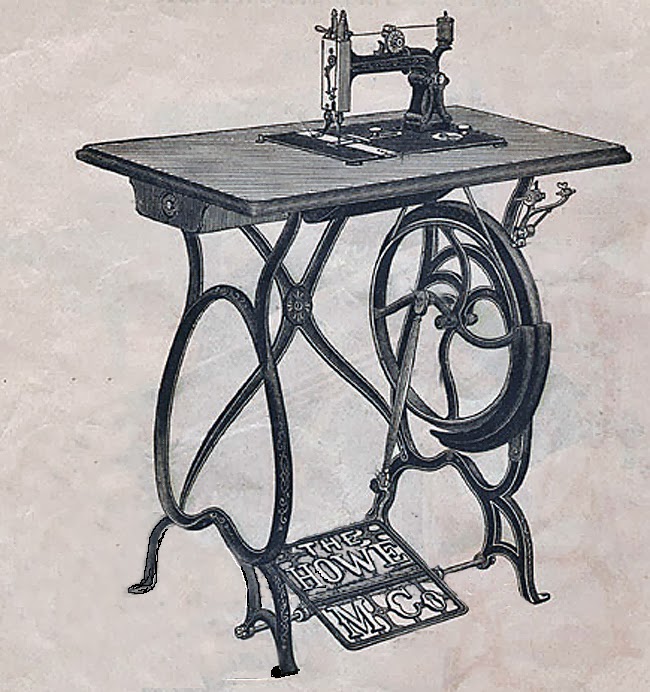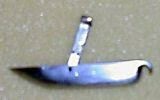| 'Rosie' is a New American Treadle c. 1910 |
Getting the hang of treadling while moving the quilt sandwich under the needle takes a little doing. When I started treadle machine quilting the first thing I did was experiment by quilting two yards of this cheater print.
My first treadle machine, 'Rosie', is a New American treadle manufactured about 1910. She is named for the neighbor I adopted her from. We worked on several quilt projects together before she was adopted by a quilting friend who wanted to explore the world of treadle sewing machines.
| Rosie helped me with this project too! |
 |
| An original 19th century quilt used as inspiration for one (or possibly two) of my own. |
The fabrics that appear to be brown are probably faded greens; the red is a woven chambray. To date I have not found another block design quite like this one, though there are many that are similar. It is a striking quilt. All of the applique was done by hand. What really inspired me was that parts of the top were assembled by machine and the red shapes in the middle of each block were machine quilted.
| My quilt blocks were hand appliqued before assembling and quilting the top using two treadle sewing machines. |
| 'John' is the first Howe treadle machine I adopted. |
Rosie and a Wilcox & Gibbs machine I use are significantly more quiet, but the most quiet of all is my Wheeler & Wilson 8. It is almost as quiet as any of my electric machines, it sews like a dream and has become the treadle I use most often. More information about other sewing machines in my collection will appear in a future post.
Each of my sewing machines, whether electric or people powered, have personalities of their own. Isn't that true about most machines - including computers?
I don't know if machine quilting on treadles will ever catch on like it has with electric machines. I doubt it. But if you are interested I strongly encourage giving it a try.
If you would like to adopt a treadle sewing machine I have something of a check list of things to consider when you first meet one. Especially if you plan to use your treadle machine for more than just decoration.
- Sit down and try out the machine to see how well it works, if at all. Many seemingly non-working machines will work with a good cleaning and a new leather belt, but some need more than that. If you have a friend who has some knowledge of treadles that is willing to help you get acquainted take them with you if possible.
- Do a little homework to find out what attachments should come with the machine. THE MOST IMPORTANT ACCESSORIES to look for are needles, bobbins and the bobbin case/shuttle. Without them there will be no sewing. Find out what type of needles the machine requires. Antique machines don't always work properly with modern needles so availability of good needles could be a problem.
- It's usually pretty easy to identify treadle machines that have been abused. Adopting them is OK if you, or someone you know, can help them through their recovery. Just beware, if parts or accessories are missing, finding the right ones can be very difficult, expensive and sometimes just plain impossible.
- Try to find out the history of the machine if at all possible. I name my machines after their original owners when their histories are complete enough to know. If not, I name them after the earliest known owner or person I purchased them from. I make copies of all paperwork that comes with the machine and its history to keep with the machine - something like putting a label on a quilt. It's nice to know where these creatures come from.
The Smithsonian Libraries online @ http://www.sil.si.edu/DigitalCollections/Trade-Literature/Sewing-Machines/. I have found literature and owner's manuals for several machines here.
ISMACS (International Sewing Machine Collectors' Society) @ http://www.ismacs.net/booklist/index.html. The Society maintains an excellent archive with copies of manuals, early advertisements, patents etc. All are available to members.
TreadleOn.net @ http://www.treadleon.net/. TreadleOn is dedicated to promoting the use of antique and vintage human powered sewing machines, i.e. treadle sewing machines and hand crank sewing machines.
Happy Quilting!

